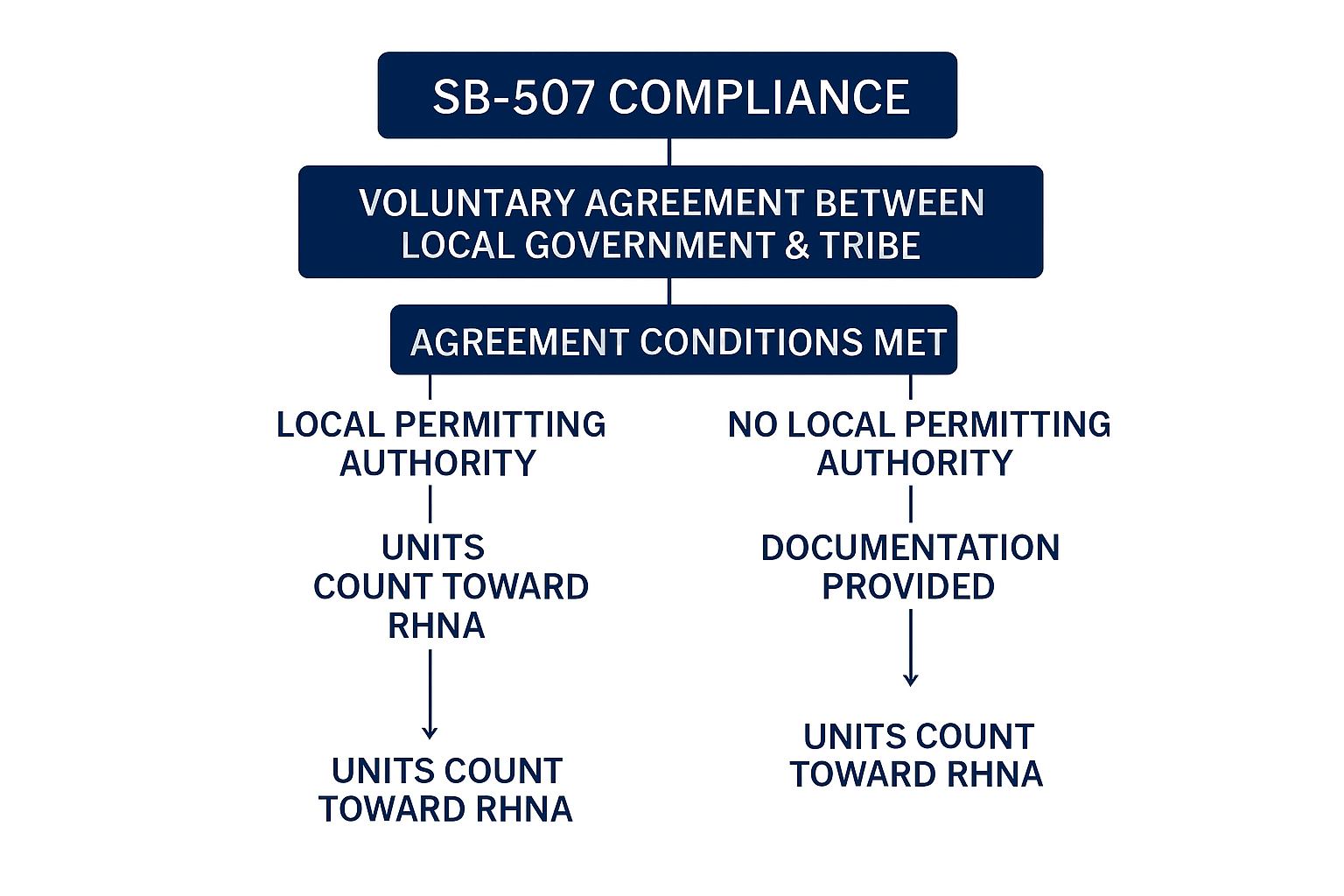Summary:
California’s housing crisis demands innovative solutions to meet regional housing needs while respecting tribal sovereignty. Senate Bill 507 (SB‑507), signed into Law in September 2025, amends the Planning and Zoning Law to allow local governments to partner with federally recognized tribes in meeting Regional Housing Needs Allocation (RHNA) targets. This legislation introduces a voluntary framework for counting tribal housing developments toward local RHNA obligations, promoting collaboration and equity.
Background: What is RHNA?
Under Government Code §65584, every city and county must adopt a housing element as part of its general plan. This element includes:
- An assessment of housing needs.
- The locality’s share of the regional housing need, determined by:
- Councils of Governments (COGs) or, where no COG exists, the Department of Housing and Community Development (HCD).
- Allocations across income categories (very low, low, moderate, above moderate).
Local governments often struggle to meet RHNA targets due to land constraints, infrastructure costs, and regulatory hurdles. Tribal lands, historically excluded from RHNA calculations, represent an untapped opportunity for housing production.
What SB‑507 Changes
SB‑507 adds Section 65584.2.2 to the Government Code, creating a pathway for tribal housing units to count toward local RHNA allocations under specific conditions:
1. Voluntary Agreements Between Local Governments and Tribes
- A city or county within the same county as a tribe may enter into a voluntary agreement with that tribe.
- Agreements enable new tribal housing development projects to be counted toward the locality’s RHNA share.
2. Conditions for RHNA Credit
- Permitting Authority:
- If the local government has permitting authority over the tribal site, units count automatically.
- If not, the agreement must include documentation proving units will be built, such as:
- Tribal approvals and permits.
- Certificates of occupancy.
- Reporting new units to the Department of Finance.
- Construction timelines and affordability data.
- Location:
- Tribal housing must be on land within or contiguous to the local government’s boundaries.
- Unit Definition:
- Units must meet the U.S. Census Bureau definition of a housing unit.
3. Sovereign Immunity Protection
- Local governments cannot require tribes to waive sovereign immunity as a condition of agreeing.
4. Applicability
- Applies to all cities and counties, including charter cities, as a matter of statewide concern.
5. Legislative Intent
- Encourages HCD to approve tribal housing units for RHNA credit when they meet the requirements of the Housing Element Law.
Impact on Local Governments and Tribes
- Local Governments:
- Gain flexibility to meet RHNA targets without rezoning additional land.
- Must adopt transparent agreements and maintain compliance documentation.
- Tribes:
- Opportunity to develop housing without sacrificing sovereignty.
- Access to partnerships that may unlock infrastructure funding and shared services.
- Housing Supply:
- Expands production options, particularly in rural and underserved areas.
✅ Compliance Checklist for SB‑507
Before entering an agreement:
- Confirm the tribe is federally recognized and located in the same county.
- Verify the site is within or adjacent to local jurisdiction boundaries.
- Include documentation of:
- Permits and approvals.
- Construction timelines.
- Affordability by income category.
- Ensure units meet the U.S. Census housing unit definition.
- Do not require waiver of sovereign immunity.
- Submit agreement details to HCD for consideration of RHNA credit.
Why SB‑507 Matters
SB 507 is a landmark step toward an inclusive housing policy. By integrating tribal housing into RHNA compliance, California acknowledges tribal sovereignty while addressing housing shortages. This collaborative model could serve as a blueprint for future state-tribal partnerships in infrastructure and development.
Bottom Line
SB‑507 expands the toolkit for meeting RHNA goals, fosters intergovernmental cooperation, and promotes equity in housing development. For local governments and tribes, it’s a win-win: more housing, less conflict, and shared responsibility for solving California’s housing crisis.
